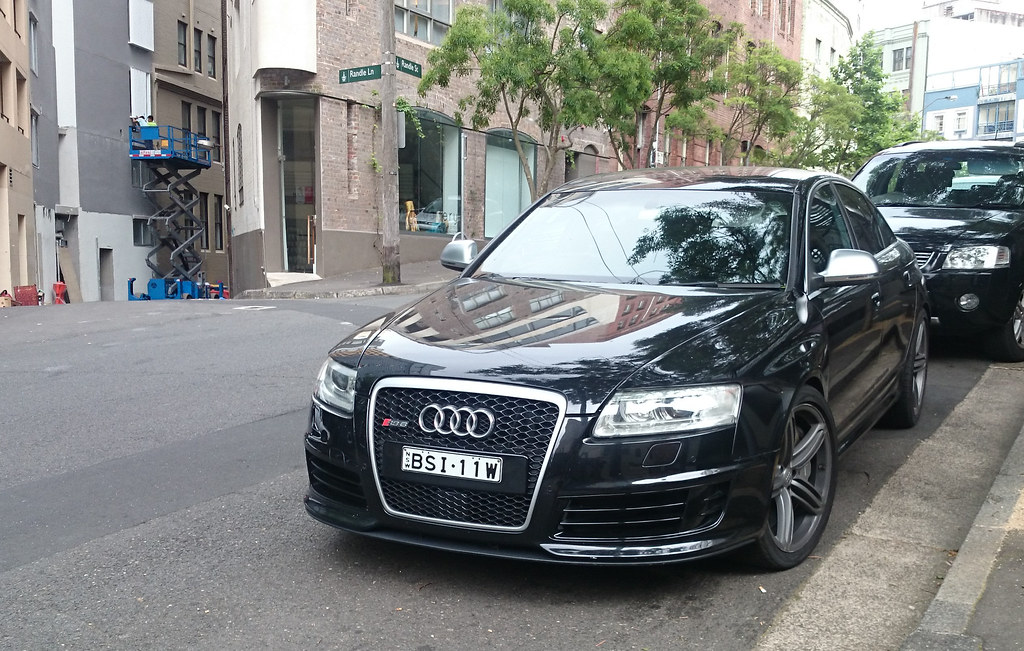
When shopping for a midsize SUV, many buyers understandably gravitate towards readily apparent features such as horsepower, fuel economy statistics, advanced infotainment systems, cargo capacity, or the convenience of third-row seating. These quantifiable metrics and visible amenities are often the primary focus, shaping initial impressions and influencing purchasing decisions. However, amidst this array of desirable attributes, a fundamentally critical aspect frequently receives less attention than it deserves: driver visibility.
Driver visibility, though less glamorous than a panoramic sunroof or a powerful engine, profoundly impacts nearly every facet of the driving experience and, crucially, overall safety. Whether navigating the complexities of a bustling city intersection, executing a critical merge onto a fast-moving highway, or simply reversing out of a congested grocery store parking spot, the driver’s unobstructed ability to see clearly in all directions is paramount. This clear sightline is what primarily ensures the safety of the driver, their precious passengers, and indeed, everyone else in the surrounding environment.
In recent automotive design trends, there has been a noticeable shift towards more stylish and aggressively contoured SUV aesthetics. This often translates into design elements like sloping rooflines, visually appealing yet thicker structural pillars, and rising beltlines, which, while enhancing a vehicle’s curb appeal, frequently compromise driver visibility. This article will delve into ten specific midsize SUVs, meticulously evaluating five models that excel in providing outstanding driver visibility and another five that, unfortunately, present significant sightline challenges, often leaving drivers feeling confined or as if they are “driving blind.” Our analysis will highlight what makes certain models exemplary in their class, from thin pillars and expansive glass areas to elevated seating positions and intelligently placed mirrors, offering practical insights for informed consumer decisions.
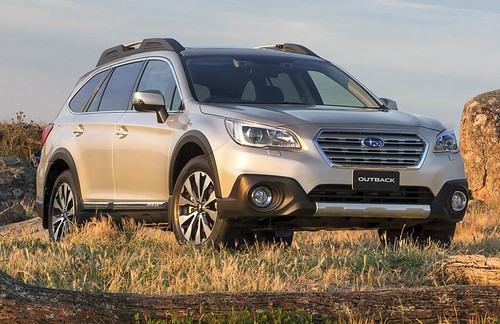
1. **Subaru Outback**The Subaru Outback has consistently cultivated a strong reputation for delivering exceptional visibility to its drivers, a quality that significantly contributes to its appeal as a versatile crossover SUV. Its design effectively merges the practical functionality typically found in an SUV with the more open, airy cabin feel characteristic of a station wagon. This thoughtful combination results in an interior environment that promotes a heightened sense of awareness and reduced driver strain.
One of the Outback’s most commendable features is its generously sized windshield. This windshield is not merely wide but also remarkably unobstructed by the A-pillars, which are often a significant source of visual impediment in other vehicles. This design choice provides the driver with a superior and more expansive view of the road ahead, effectively minimizing blind spots that can pose a hazard when approaching intersections, navigating turns, or merging into traffic. The deliberate minimal thickness of these A-pillars further assists in avoiding visual obstructions, making it considerably easier to spot pedestrians, cyclists, and other vehicles in busy and dynamic driving environments.
Complementing the impressive front visibility, the side windows of the Outback are also notably large, affording drivers a much more expansive view of their immediate surroundings. These larger windows play a crucial role in reducing inherent blind spots, which can otherwise be a persistent challenge in many contemporary SUVs. Furthermore, the slim side mirrors on the Outback are judiciously positioned to further enhance side visibility without inadvertently blocking the driver’s essential line of sight. Through these meticulously considered design features, the Outback provides one of the most open, intuitive, and unobstructed views in its entire class, making it an ideal choice for individuals who prioritize seeing clearly, whether navigating bustling urban landscapes or winding rural roads.
The Outback’s exemplary visibility extends to its rear design as well. The rearview provided by its clear and wide rear window significantly simplifies tasks such as parking and reversing. This straightforward rear visibility, when coupled with the standard rearview camera, empowers drivers to confidently back out of tight spaces or maneuver out of driveways with greater ease and reduced stress. Such features solidify the Subaru Outback’s position as one of the premier choices for drivers who frequently encounter crowded parking lots or need to navigate narrow, challenging streets, ensuring a more confident and safer driving experience in a variety of conditions.
When you are behind the wheel of an Outback, the ability to perceive more of your surroundings than is often possible in other vehicles can substantially reduce driving stress and enhance the overall experience. Whether skillfully navigating through dense city traffic or confidently tackling winding mountain roads, the Subaru Outback offers unparalleled visibility. Its advanced safety features, including blind-spot monitoring, further augment this already superior visual experience, working in tandem with the vehicle’s inherent design. The harmonious combination of clear sightlines, an elevated driving position, and a broad view of the road ahead makes this SUV an exceptional selection for anyone seeking enhanced confidence and peace of mind during their daily drives.
Car Model Information: 2013 Subaru Outback 2.5i Premium
Name: Subaru Outback
Caption: 2023 Subaru Outback Premium
Manufacturer: Subaru
Production: 1994–present
ModelYears: 1995–present
Assembly: Ota, Gunma
Aka: Subaru Legacy
Class: Mid-size car
BodyStyle: station wagon
Categories: All Wikipedia articles written in American English, All articles with unsourced statements, Articles containing Japanese-language text, Articles with short description, Articles with unsourced statements from April 2012
Summary: The Subaru Outback is an automotive nameplate used by the Japanese automaker Subaru for two different themed vehicles: a Legacy-derived station wagon, the Outback (1994–present, also sold as Legacy Outback (Japanese: スバル・レガシィアウトバック, Hepburn: Subaru Regashi Autobakku) in some markets), and an Impreza-derived off-road themed hatchback, the Outback Sport (1994–2011).
Most versions of the Outback wagon and Outback Sport have had all-wheel drive as standard equipment.
Get more information about: Subaru Outback
Buying a high-performing used car >>>
Brand: Subaru Model: Outback
Price: $9,998 Mileage: 130,487 mi.
Read more about: Buyer’s Remorse on the Horizon: 15 Rides Drivers Confess They’d “Unacquire” in a Heartbeat
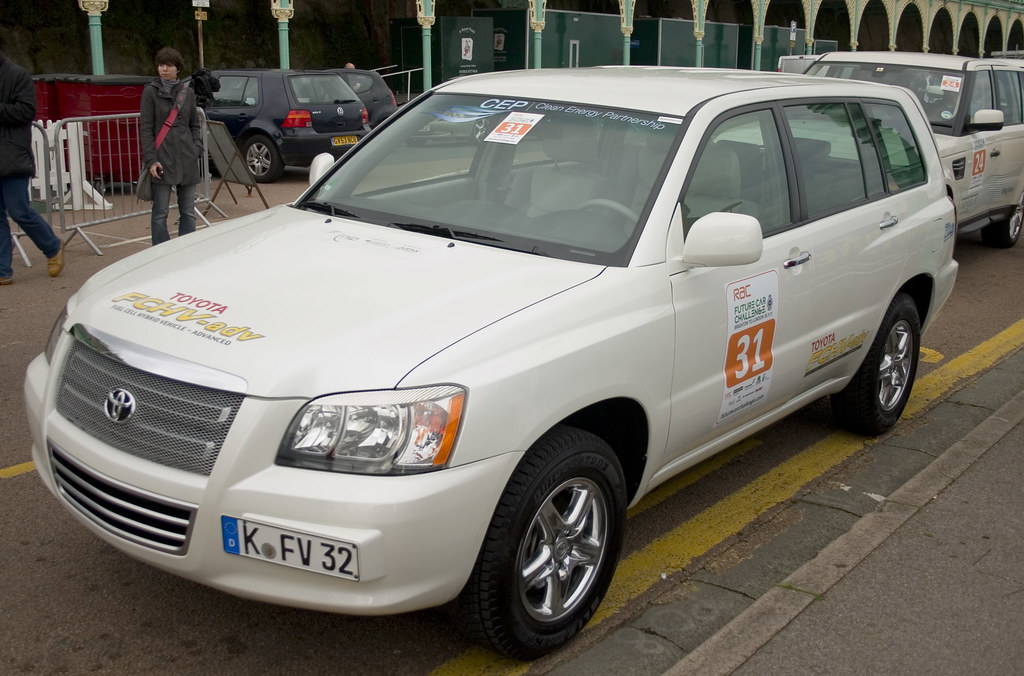
2. **Toyota Highlander**The Toyota Highlander distinguishes itself as a midsize SUV that consistently offers a clear and commanding view of the road, a significant advantage for any driver. Its thoughtfully designed high seating position, combined with generously sized windows, makes it remarkably easy for drivers to detect pedestrians, cyclists, and other vehicles from a greater distance. This enhanced observational capability is a key contributor to proactive driving and overall road safety.
A crucial design element contributing to the Highlander’s superior visibility is the careful engineering of its A-pillars. These pillars are deliberately designed to be thin, thereby minimizing their obstructive impact on sightlines, particularly when making turns or changing lanes. This particular feature substantially broadens the driver’s field of view and effectively diminishes the blind spots that are frequently encountered in many other SUVs, especially those characterized by bulkier pillar designs. Such astute design choices inherent in the Highlander contribute significantly to a more open, unobstructed, and ultimately safer driving experience, positioning it as a top contender for those who place a high value on clear sightlines.
Further enhancing its visibility profile, the Highlander’s side windows are notably expansive, allowing drivers to perceive more of the surrounding environment. This is particularly vital when operating the vehicle in busy traffic conditions where constant situational awareness is paramount. The side mirrors are also meticulously positioned, offering drivers a comprehensive view of the adjacent lanes, which further minimizes potential blind spots. The combined effect of these well-designed windows and mirrors allows the driver to maneuver safely and confidently through complex traffic scenarios and crowded parking lots, instilling a greater sense of assurance on the road.
Rear visibility in the Toyota Highlander is equally impressive, adding another layer to its comprehensive safety package. The SUV is equipped with a wide rear window, which significantly simplifies the task of reversing or parking, even in confined spaces. This wide view is synergistically complemented by the standard rearview camera, which provides sharp clarity and offers drivers an improved perspective of what lies directly behind them, thereby making parking and backing out of driveways a considerably less stressful undertaking. This holistic approach to rear visibility ensures that drivers can confidently execute maneuvers in tight or challenging environments.
As an additional amenity, higher trim levels of the Highlander offer an available panoramic sunroof. Beyond its aesthetic appeal and the creation of a more open cabin feel, this feature subtly increases overall visibility, particularly when driving through expansive areas where an unobstructed overhead view can be beneficial. For families seeking a spacious and family-friendly SUV that unequivocally prioritizes and delivers excellent all-around visibility, the Toyota Highlander presents itself as an outstanding and highly recommended choice, blending comfort with paramount safety features.
Car Model Information: 2013 Toyota Highlander SE
Name: Toyota Highlander
Caption: 2022 Toyota Highlander Hybrid
Manufacturer: Toyota
Aka: unbulleted list
Production: 2000–present
ModelYears: 2001–present
Class: Mid-size crossover SUV
BodyStyle: SUV
Layout: unbulleted list
Chassis: Unibody
Categories: 2010s cars, 2020s cars, All-wheel-drive vehicles, All Wikipedia articles written in American English, All articles with dead external links
Summary: The Toyota Highlander, also known as the Toyota Kluger (Japanese: トヨタ・クルーガー, Hepburn: Toyota Kurūgā), is a mid-size crossover SUV with three-row seating produced by Toyota since 2000.
Announced in April 2000 at the New York International Auto Show and arriving in late 2000 in Japan and January 2001 in North America, the Highlander became one of the first car-based mid-size SUV or mid-size crossovers. The Highlander is the crossover counterpart to the more rugged, truck-based mid-size 4Runner and became Toyota’s best-selling SUV before being surpassed by the smaller RAV4 in 2006.
The first-generation model was sold in Japan as the Kluger, which was exclusive to a dealership network called Toyota Netz as a larger alternative to the RAV4. The Kluger nameplate is also used in Australia because “Highlander” is a trademarked trim line name owned by Hyundai. The name is derived from the German word klug, which means smart or clever (Klüger – with diacritics – means “someone who is smarter than another” in German).
Get more information about: Toyota Highlander
Buying a high-performing used car >>>
Brand: Toyota Model: Highlander
Price: $15,462 Mileage: 140,110 mi.
Read more about: Used Hybrid Battery Reliability: Decoding 10 Models – The Ones That Endure and the Ones That Don’t
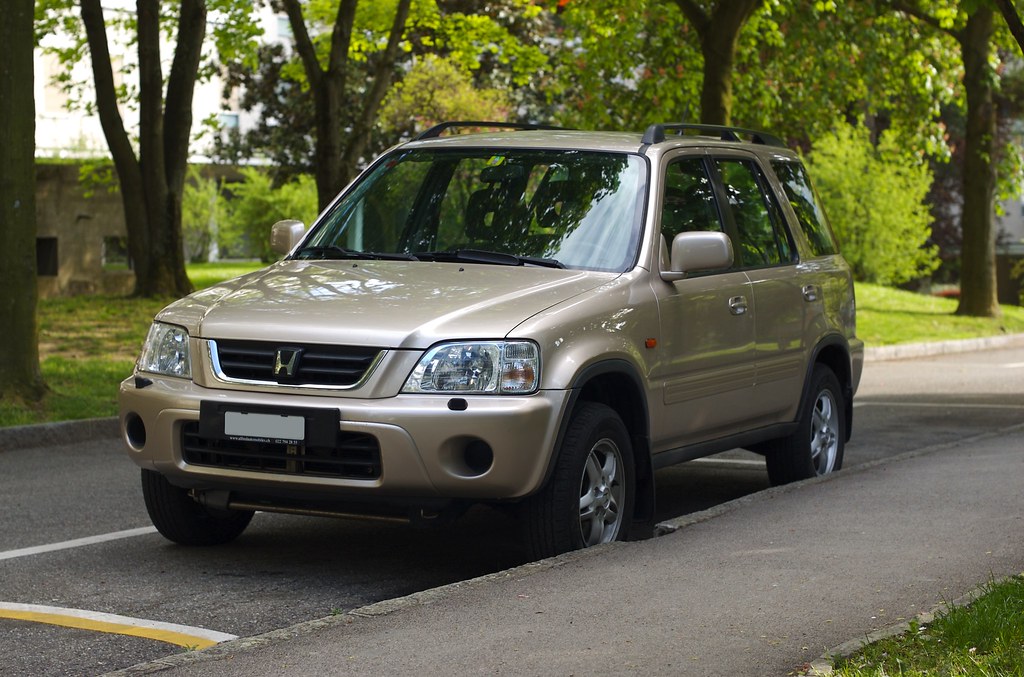
3. **Honda CR-V**The Honda CR-V has long held its position as one of the most popular compact crossovers, and a significant portion of its enduring appeal can be attributed to its exceptional visibility. The vehicle’s high seating position offers drivers an elevated and commanding perspective, which makes it considerably easier to survey the road ahead, anticipate upcoming turns, detect pedestrians, and observe other vehicles. This proactive visual advantage is a cornerstone of safe and confident driving.
At the front, the CR-V features a large windshield that is remarkably unobstructed, providing excellent clarity and an expansive field of view. A key differentiator from many other SUVs is the relatively narrow design of the CR-V’s A-pillars. This deliberate engineering choice further enhances the driver’s line of sight, significantly reducing the amount of visual obstruction that can occur when making turns or changing lanes. This intelligent design enables the CR-V to maintain a consistently clear view of the road, even when navigating through tight spaces or complex urban environments.
The CR-V’s side windows are also meticulously designed with optimal visibility in mind. They are wide and offer a comprehensive view of the vehicle’s surroundings, which plays a crucial role in mitigating blind spots. Furthermore, the side mirrors are generously sized to provide an ample view of adjacent lanes, and the driver’s seat height is carefully calibrated to ensure that the view out of the side windows remains entirely unobstructed. These combined features collectively position the CR-V as one of the best compact SUVs available today in terms of providing outstanding all-around visibility, a vital attribute for daily driving.
When it comes to rearview capabilities, the CR-V again excels by offering a wide, open view out of the back, thanks to its comparatively large rear window. Reversing maneuvers are simplified with the aid of the standard rearview camera, and the vehicle’s inherently compact size further assists in overall maneuverability, particularly in congested areas. The CR-V represents an excellent option for individuals who prioritize ease of parking and reversing, in addition to general driving visibility, making it a highly practical choice for urban dwellers and suburban families alike.
Beyond its inherent design strengths, the CR-V also incorporates the added benefits of advanced safety features, suchifying as lane-keeping assist and collision mitigation braking. These technologies work synergistically with the vehicle’s superior visibility to ensure that every driving experience is as safe and secure as possible. The harmonious integration of clear sightlines and cutting-edge driver assistance technologies makes the Honda CR-V a compelling choice for consumers prioritizing both active and passive safety.
Car Model Information: 2023 Honda CR-V Hybrid Sport
Name: Honda CR-V
Caption: 2023 Honda CR-V e:HEV
Manufacturer: Honda
Aka: Honda Breeze (China, 2019–present)
Production: 1995–present
Class: Compact crossover SUV
BodyStyle: Sport utility vehicle
Layout: Front-engine, front-wheel-drive layout,Front-engine, four-wheel-drive layout
Chassis: Unibody
Predecessor: Honda Crossroad
Successor: Honda ZR-V
Categories: 2000s cars, 2010s cars, 2020s cars, All-wheel-drive vehicles, All articles containing potentially dated statements
Summary: The Honda CR-V (also sold as the Honda Breeze in China since 2019) is a compact crossover SUV manufactured by Japanese automaker Honda since 1995. Initial models of the CR-V were built using the same platform as the Civic.
Honda began producing the CR-V in Sayama, Japan, and Swindon, United Kingdom, for worldwide markets, adding North American manufacturing sites in East Liberty, Ohio, United States, in 2007; El Salto, Jalisco, Mexico, in late 2007 (ended in early 2017); Alliston, Ontario, Canada, in 2012; and Greensburg, Indiana, United States, in February 2017. The CR-V is also produced in Wuhan for the Chinese market by Dongfeng Honda, and also marketed as the Breeze in China for the version produced at Guangzhou by Guangqi Honda.
Honda states that “CR-V” stands for “Comfortable Runabout Vehicle,” while the term “Compact Recreational Vehicle” was used in a British car review article that was republished by Honda, associating the model name with the Sports Utility Vehicle abbreviation of SU-V.
As of 2022, the CR-V is positioned between the smaller ZR-V (marketed as HR-V in North America) — with which the CR-V shares a platform — and the larger North American market Passport/Pilot or the Chinese market Avancier/UR-V. It is currently Honda’s best-selling vehicle in the world, and the second best-selling SUV globally in 2020.
Get more information about: Honda CR-V
Buying a high-performing used car >>>
Brand: Honda Model: CR-V
Price: $28,998 Mileage: 55,051 mi.
Read more about: Beyond the Hype: 11 Unbeatable Sports Cars for Budget-Conscious Enthusiasts Seeking Long-Term Reliability and Driving Thrills
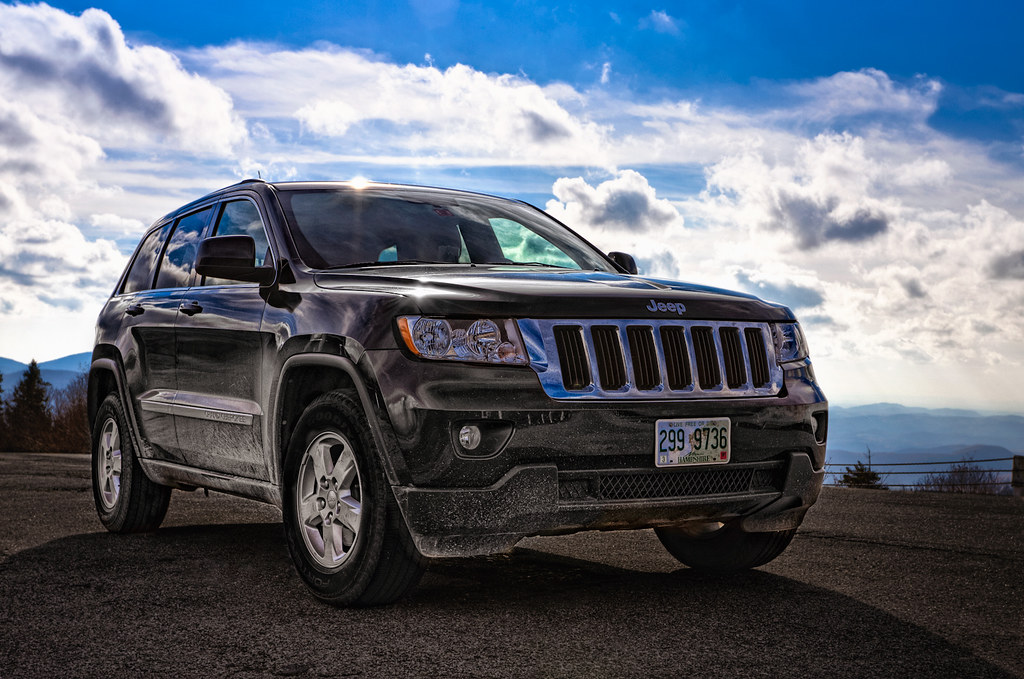
4. **Jeep Grand Cherokee**The Jeep Grand Cherokee stands as a prominent midsize SUV that successfully delivers a commanding view of the road, effectively blending its renowned rugged performance capabilities with expansive visibility. This combination makes it a favored choice among drivers who appreciate both the nuances of urban driving and the exhilaration of off-roading adventures. The vehicle’s design ethos clearly prioritizes driver awareness across diverse terrains and conditions.
A fundamental feature significantly enhancing visibility in the Grand Cherokee is its elevated seating position. This design element provides the driver with a superior and more comprehensive perspective of the road ahead, enabling better anticipation of traffic flow and potential hazards. The SUV’s large windshield remains largely unobstructed by thick pillars, which is crucial for maintaining excellent forward visibility, especially when traversing challenging off-road conditions or driving through inclement weather where every sightline matters.
The side windows of the Grand Cherokee are specifically engineered to offer an expansive view, a design choice that effectively aids in reducing blind spots. The side mirrors are appropriately sized and strategically placed to ensure that the driver can easily monitor surrounding traffic without the necessity of constant head-turning or excessive movement. This particular feature proves exceptionally useful when merging into traffic on busy highways or when navigating through confined spaces on urban streets, contributing to a smoother and more secure driving experience.
The rear visibility in the Grand Cherokee is also exceptional, further bolstering its safety profile. The wide rear window, combined with the standard rearview camera, transforms reversing into a remarkably simple task, even in challenging environments such as tight parking spots or uneven off-road terrain. This SUV is explicitly designed to offer a clear and comprehensive view of what lies behind, which is particularly important when undertaking tasks such as towing or navigating particularly rough and unpredictable terrain. This attention to detail in rearward visibility underscores its practical utility.
Whether drivers find themselves navigating the intricate pathways of urban areas or venturing into the vastness of the great outdoors, the Jeep Grand Cherokee provides the essential visibility needed for a consistently safe and confident driving experience. Its robust construction and purposeful design converge to offer not just exhilarating performance, but also the peace of mind that comes from superior situational awareness, making it a truly versatile and reliable midsize SUV for a broad spectrum of drivers and their diverse needs.
Car Model Information: 2022 Volkswagen Atlas 2.0T SE
Name: Jeep Grand Cherokee
Manufacturer: Jeep
Production: 1992–present
ModelYears: 1993–present
Class: unbulleted list
BodyStyle: sport utility vehicle
Layout: unbulleted list
Chassis: Vehicle_frame#Uniframe
Categories: 2000s cars, 2010s cars, 2020s cars, All-wheel-drive vehicles, All Wikipedia articles written in American English
Summary: The Jeep Grand Cherokee is a range of mid-sized sport utility vehicles produced by American manufacturer Jeep. At its introduction, while most SUVs were still manufactured with body-on-frame construction, the Grand Cherokee has used a unibody chassis from the start.
Get more information about: Jeep Grand Cherokee
Buying a high-performing used car >>>
Brand: Jeep Model: Grand Cherokee
Price: $21,999 Mileage: 44,961 mi.
Read more about: Steer Clear: 14 Vehicles Notorious for Early Breakdowns Before 50,000 Miles
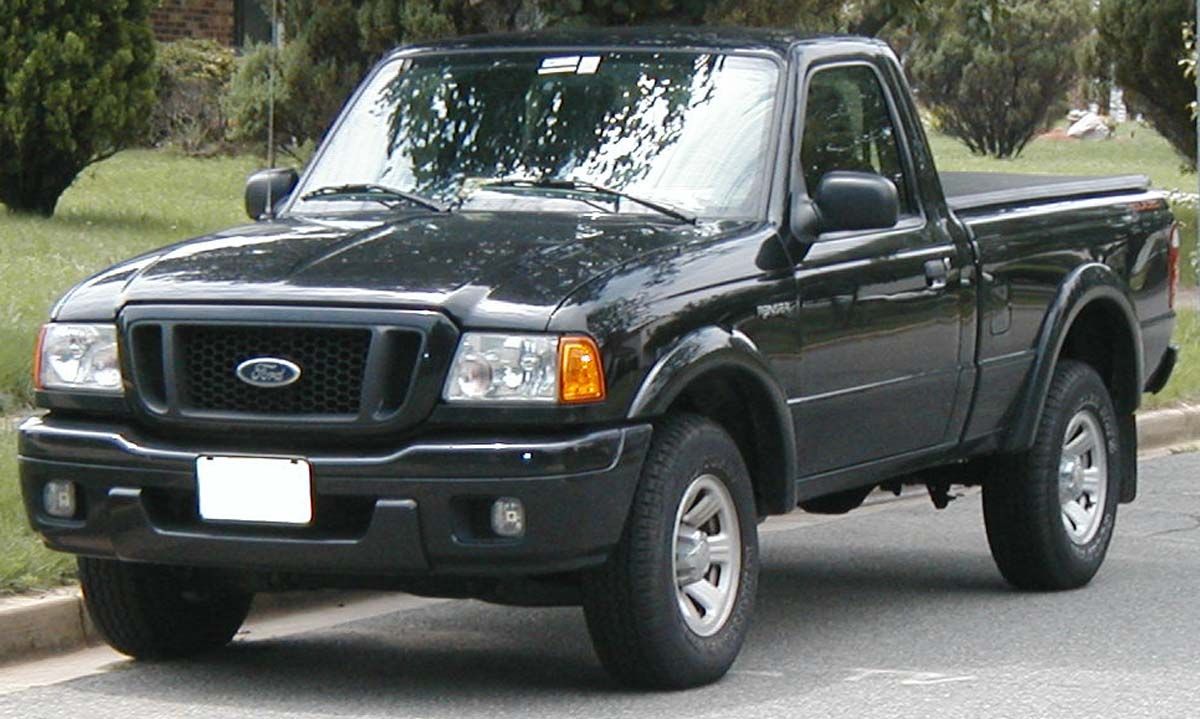
5. **Ford Edge**The Ford Edge positions itself as a midsize crossover that truly excels in providing excellent visibility for its driver, making it a compelling option for those prioritizing clear sightlines. With its spacious cabin and an inherently high driving position, the Edge affords a clear and unobstructed view of the road from the front. This design advantage significantly simplifies the task of navigating through busy city streets and confidently merging onto bustling highways, contributing to a more relaxed and controlled driving experience.
A key aspect of the Edge’s superior front visibility is its large front windshield, which is complemented by slim A-pillars. This intelligent combination ensures minimal obstruction to the driver’s view, a critical factor that directly enhances overall visibility. The design philosophy behind the Edge clearly prioritizes clear sightlines, a feature that is absolutely essential when executing lane changes or approaching intersections, providing the driver with greater confidence and reducing potential hazards by offering an unimpeded view of their surroundings.
The side windows in the Ford Edge are also generously sized, contributing significantly to great visibility and making it easier for drivers to effectively monitor their surroundings. Furthermore, the side mirrors are positioned optimally, allowing drivers to perceive traffic in neighboring lanes without the necessity of significant head movement or uncomfortable twisting. This thoughtful design strategy effectively reduces blind spots and contributes to a smoother, more fluid driving experience, especially prevalent in tight traffic conditions where instantaneous awareness is crucial for safety.
Rear visibility in the Ford Edge is equally impressive, thanks to its large rear window, which allows drivers to see behind them with remarkable clarity. The rearview camera comes standard on all models, providing a reliable aid for reversing. Additionally, higher trim levels offer an advanced 180-degree camera system, which further enhances the driver’s ability to see what is behind the vehicle when reversing or parking, providing an almost panoramic perspective of the rear environment. This advanced camera technology, combined with traditional sightlines, delivers comprehensive rearward awareness.
The expansive windows, the precise and effective positioning of the side mirrors, and the integration of advanced camera systems collectively make the Ford Edge a top contender for anyone in search of a midsize SUV that consistently delivers great visibility across all driving situations. Its commitment to providing a clear and comprehensive view ensures that drivers feel confident and secure, whether navigating intricate urban landscapes or cruising on open highways, making it a highly practical and safety-conscious choice for a diverse range of consumers.
Car Model Information: 2001 Ford Ranger Edge
Name: Ford Edge
Caption: 2019 Ford Edge SEL EcoBoost AWD (US)
Manufacturer: Ford Motor Company
Production: 2006–present
ModelYears: 2007–2024 (CAN/US),2016–2021 (Europe),2015–2019 (UK)
Class: Mid-size crossover SUV
BodyStyle: SUV
Layout: Front-engine, front-wheel-drive layout
Categories: 2010s cars, 2020s cars, All-wheel-drive vehicles, All articles with unsourced statements, Articles with short description
Summary: The Ford Edge is a crossover SUV manufactured and marketed by the Ford Motor Company introduced for the 2007 model year as the first mid-size CUV marketed by Ford in North America. Deriving its name from a trim package of the Ford Ranger, the Ford Edge is positioned between the Ford Escape and the Ford Explorer within the Ford product line.
Production of the North American Edge ended in April 2024, with the third generation Edge (dubbed the Edge L), launched in 2023, being produced and sold exclusively in China.
Sharing its underpinnings with the Ford Fusion sedan, Ford also marketed a rebadged variant as the Lincoln MKX (since 2019, the Lincoln Nautilus). The second generation is also marketed by Ford of Europe, positioned between the Kuga (Escape) and the Explorer PHEV.
Manufacturing of the first two generations took place at Oakville Assembly (Oakville, Ontario) alongside the Nautilus.
Get more information about: Ford Edge
Buying a high-performing used car >>>
Brand: Ford Model: Edge
Price: Not Priced Mileage: 137,325 mi.
Read more about: Rev Up Your Engines! These 14 Stars Boast Jaw-Dropping, Priceless Classic Car Collections
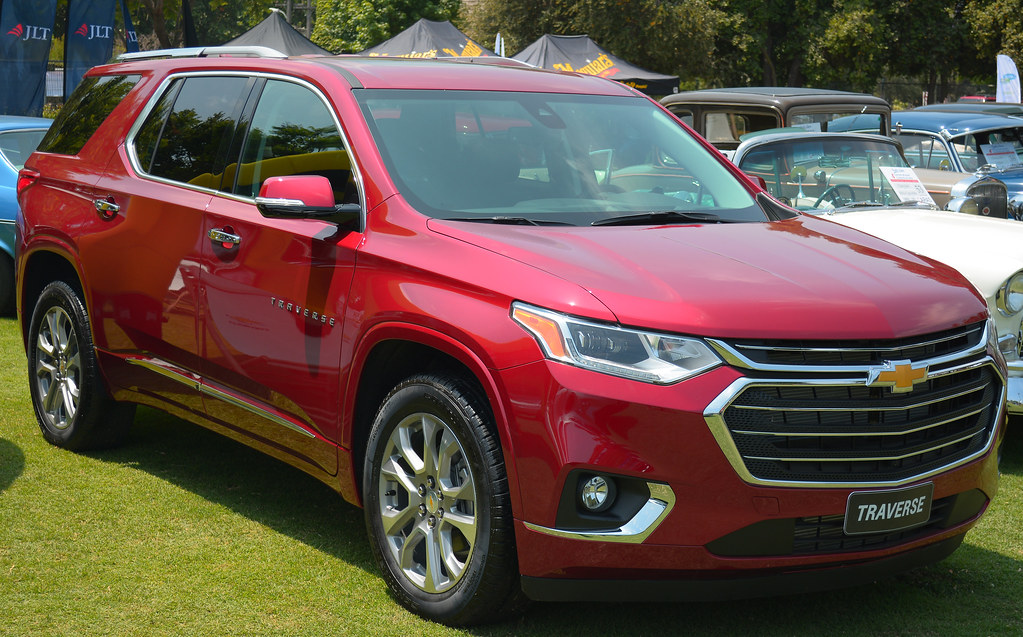
6. **Chevrolet Traverse**The Chevrolet Traverse, a midsize SUV known for its generous interior space and comfortable ride, unfortunately presents notable challenges in terms of driver visibility. A significant impediment stems from its thick A-pillars, which can severely obstruct the driver’s view. This is particularly evident when turning at intersections or changing lanes, as these bulky pillars block critical sightlines, making it difficult to spot pedestrians, cyclists, or smaller vehicles in busy environments. These sightline limitations can create stressful situations where quick decision-making is necessary.
The Traverse’s side windows, while large, are positioned in a way that contributes to substantial blind spots, especially on the driver’s side. This design hinders the ability to monitor adjacent traffic or spot vehicles in neighboring lanes during highway merges or urban traffic. The side mirrors, although adequately sized, are not optimally positioned to offer a consistently clear view, meaning that even with advanced safety features like blind-spot monitoring, the Traverse can still leave drivers feeling less aware of their immediate surroundings. This restricted view makes maneuvering in tight spaces notably challenging.
Rear visibility in the Traverse is another area of concern. The rear window is relatively small compared to others in its class, and coupled with wide rear pillars, it significantly restricts the driver’s view when reversing or parking. This makes navigating parking lots difficult, and even the standard rearview camera offers only partial mitigation for the limited rearward sightlines. The vehicle’s large size further compounds these issues, making backing out of confined driveways or parking spots a cumbersome and potentially stressful task for drivers who prioritize clear, unhindered visibility.
Car Model Information: 2021 Chevrolet Traverse Premier
Name: Chevrolet Traverse
Caption: 2025 Chevrolet Traverse RS
Manufacturer: General Motors
Production: 2008–present
ModelYears: 2009–present
Class: Full-size crossover SUV
Layout: ubl
Predecessor: Chevrolet TrailBlazer
Categories: 2010s cars, 2020s cars, All-wheel-drive vehicles, All Wikipedia articles written in American English, All articles with dead external links
Summary: The Chevrolet Traverse is a full-size crossover SUV with three-row seating built by General Motors produced since the 2009 model year. It is built on the same platform as the GMC Acadia and Buick Enclave, known as the Lambda platform for the first generation, and the C1XX for the second generation. It also shares the C1XX platform with the Cadillac XT6. It is the successor to the TrailBlazer body-on-frame SUV and the Uplander minivan.
The second-generation model debuted in showrooms in the middle of 2017. Starting with the 2019 model year, the Traverse was slotted above the new mid-size Chevrolet Blazer as part of Chevrolet’s plans to expand its SUV lineup.
The Traverse name was originally used for a concept car at the 2003 North American International Auto Show in Detroit, but that concept gave way when the Equinox launched for the 2005 model year.
Get more information about: Chevrolet Traverse
Buying a high-performing used car >>>
Brand: Chevrolet Model: Traverse
Price: $29,995 Mileage: 84,738 mi.
Read more about: Avoid These 14 Compact SUVs: Your Guide to Steering Clear of Money Pits After 90,000 Miles
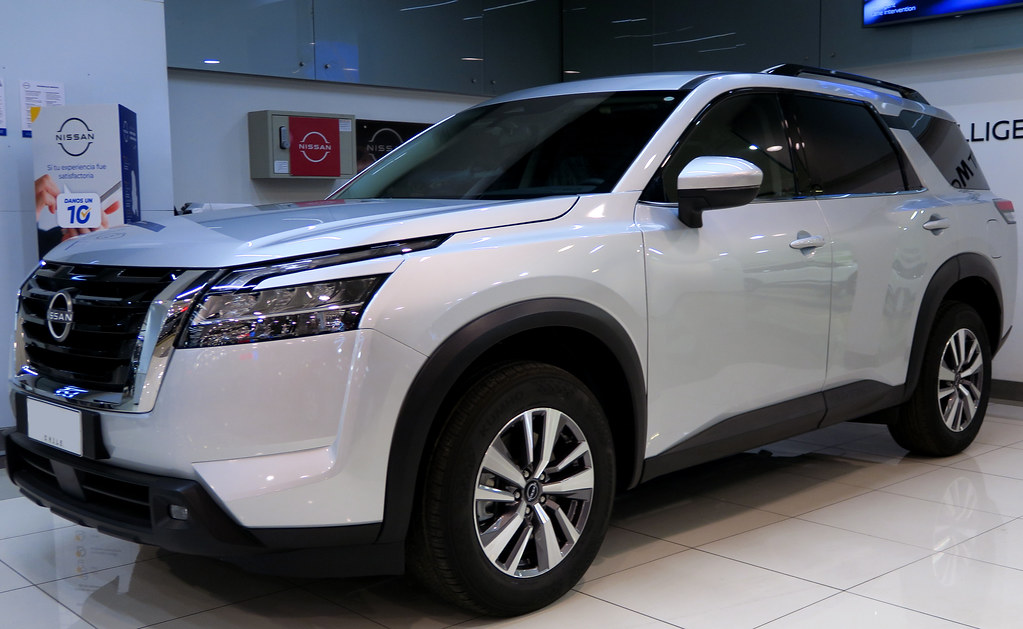
7. **Nissan Pathfinder**The Nissan Pathfinder, a midsize SUV that has seen numerous redesigns, continues to struggle with inherent visibility issues. Its A-pillars are notably thick and positioned to create significant blind spots, making it challenging to identify pedestrians, cyclists, or other vehicles, especially during lane changes or turns. These bulky A-pillars obstruct the driver’s forward-lateral view, which is particularly problematic when navigating busy intersections or merging onto highways, potentially leading to dangerous situations requiring rapid reactions.
While the Pathfinder offers family comfort and a spacious interior, its obstructed sightlines compromise the driving experience, often leaving drivers feeling less aware of their environment. The side windows, though large, do not fully compensate for the visibility issues caused by the thick A-pillars. They still create substantial blind spots, particularly on the driver’s side, making it difficult to monitor surrounding traffic and causing hesitation when switching lanes. Under adverse conditions like heavy rain or snow, these blind spots become even more pronounced.
Rear visibility is also a concern in the Pathfinder. The rear window is relatively small, and combined with thick rear pillars, it can create a sensation of driving blind during reversing or parking maneuvers. Parking in tight spots often becomes reliant on guesswork, and the limited rearward view necessitates heavy use of the rearview camera. Even with this technology, the physical obstructions make backing out of parking spaces or driveways a challenging endeavor. For drivers who frequently navigate urban environments or parking garages, the Pathfinder’s limited visibility can be a significant drawback.
Car Model Information: 2023 Nissan Pathfinder SL
Name: Nissan Pathfinder
Caption: 2022 Nissan Pathfinder Platinum 4WD (R53, US)
Manufacturer: Nissan
Production: 1985–present
ModelYears: unbulleted list
Layout: unbulleted list
Class: unbulleted list
Chassis: unbulleted list
Predecessor: unbulleted list
Successor: unbulleted list
Categories: 1990s cars, 2000s cars, 2010s cars, 2020s cars, All-wheel-drive vehicles
Summary: The Nissan Pathfinder is a range of sport utility vehicles manufactured by Nissan since 1985. Until the third-generation model, the Pathfinder is based on Nissan’s compact pickup truck platform which it shares with the Navara/Frontier.
The Pathfinder was marketed as the Nissan Terrano (Japanese: 日産・テラノ, Hepburn: Nissan Terano) outside North America. Beginning in 2004, the vehicles were marketed globally as the Pathfinder.
In 2012, the R52 series Pathfinder was released as a three-row crossover SUV based on the unibody Nissan D platform, moving away from the body-on-frame chassis format. The role of a mid-size body-on-frame SUV in Nissan’s global lineup was passed to the Terra/X-Terra, which was released in 2018 and based on the D23 series Navara.
Get more information about: Nissan Pathfinder
Buying a high-performing used car >>>
Brand: Nissan Model: Pathfinder
Price: $33,900 Mileage: 18,055 mi.
Read more about: Consumer Alert: The SUVs Where Repair Bills and Hidden Costs Make Them Not Worth Fixing
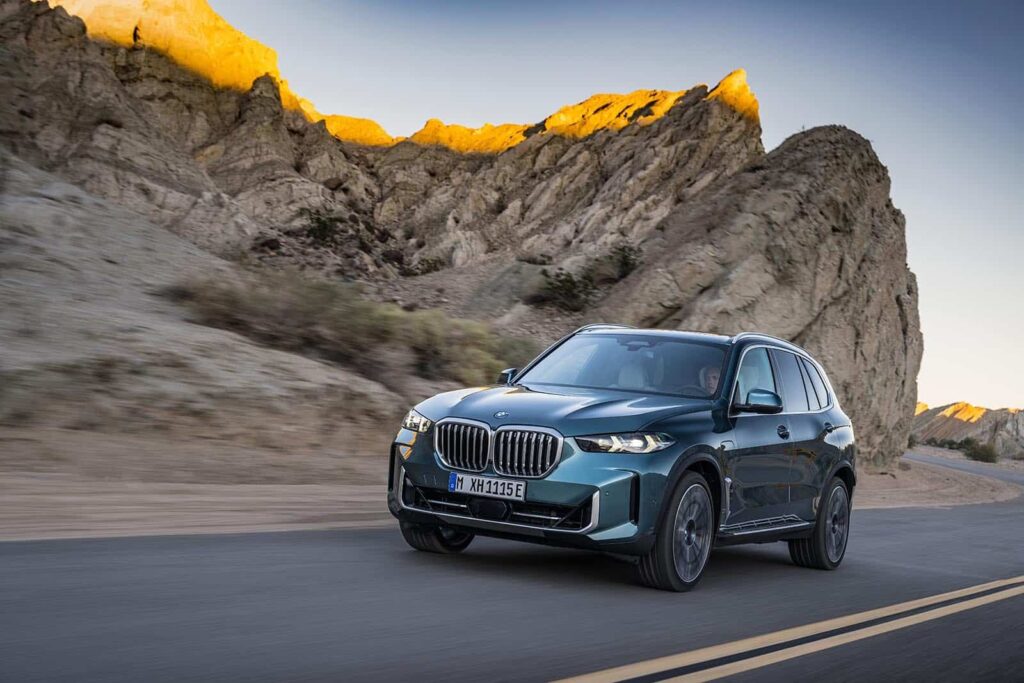
8. **BMW X6**The BMW X6, a luxury SUV known for blending sporty performance with an elegant, coupe-like design, unfortunately sacrifices practical driver visibility for its distinctive style. Its characteristic sloping roofline and small rear window severely limit rearward visibility, making it difficult to accurately perceive what lies behind, especially during reversing. The narrow rear window and angular rear pillars create significant blind spots, complicating parking and backing out of tight spaces where clear sightlines are crucial for safety and precision.
The X6’s A-pillars are also quite thick, obstructing the driver’s view when making turns or changing lanes. These wide A-pillars generate substantial blind spots, increasing the perceived risk of lane changes, particularly on highways or in heavy traffic. This design overtly prioritizes aesthetics over practical utility, resulting in inherent sightline challenges that detract from the overall driving experience, especially for those accustomed to more open cabin designs. Despite advanced parking sensors and a rearview camera, the physical rearward view remains constricted, making accurate spatial judgment harder.
While the side mirrors offer a respectable view, they cannot fully mitigate the significant obstruction caused by the bulky A-pillars. This persistent lack of natural visibility, particularly in urban environments or during complex parking scenarios, necessitates a heavier reliance on technological aids like the rearview camera and blind-spot monitoring. These systems, while valuable, are not a true replacement for clear, unobstructed physical sightlines. Consequently, the X6’s restricted rear and side visibility makes it less suitable for drivers requiring consistently clear views in all directions, especially for frequent urban commuting or tight parking.
Car Model Information: 2017 BMW X6 M Base
Name: BMW X6
Caption: BMW X6 (G06)
Manufacturer: BMW
Production: December 2007 – present
ModelYears: 2008–present
Class: Executive car,crossover SUV
BodyStyle: coupé SUV
Layout: Front-engine, four-wheel-drive
Related: BMW X5
Categories: 2000s cars, 2010s cars, 2020s cars, All-wheel-drive vehicles, All articles with dead external links
Summary: The BMW X6 is a mid-size luxury crossover SUV by German automaker BMW. The BMW X6 is the originator of the sports activity coupé (SAC), referencing its sloping rear roof design. It combines the attributes of an SUV (high ground clearance, all-wheel drive and all-weather ability, large wheels and tires) with the stance of a coupé (styling featuring a sloping roof). It is built in BMW’s North American plant in Greer, South Carolina alongside the BMW X5, whose platform it shares. Prior to the release of the X7, the X6 was considered a flagship SUV for BMW.
The first generation (E71) was released for sale in April 2008 for the 2008 model year, while the second-generation X6 (F16) was launched at the Paris Motor Show in 2014. The third-generation X6 was revealed in July 2019.
Get more information about: BMW X6
Buying a high-performing used car >>>
Brand: BMW Model: X6
Price: $28,333 Mileage: 87,654 mi.
Read more about: Steer Clear: 14 Vehicles Notorious for Early Breakdowns Before 50,000 Miles

9. **Range Rover Evoque**The Range Rover Evoque, a compact luxury SUV, possesses a stylish design with a coupe-like roofline, yet this aesthetic comes at the expense of practical visibility in key areas. Its distinctive sloping roofline significantly reduces the rear window’s size, curtailing rearward visibility and making it challenging to see behind the vehicle during reversing or parking. The constricted rearward sightline, even with a standard rearview camera, often remains less than ideal, with the compact rear window and thick rear pillars creating pronounced blind spots that complicate parking and backing out.
The Evoque’s A-pillars are conspicuously thick, substantially obstructing the driver’s line of sight when making turns or initiating lane changes. These bulky pillars generate noticeable blind spots, increasing the difficulty of merging onto highways or driving through bustling intersections. This lack of consistently clear sightlines can make driving feel less intuitive and more stressful, particularly in tight or rapidly changing situations. For drivers prioritizing comprehensive visibility, the Evoque’s design may feel like a step backward, overtly compromising essential practical driving needs for a sleek and sporty aesthetic.
Despite its impressive performance and luxurious interior, the Evoque’s design—characterized by its small rear window and thick pillars—results in a notable deficiency in overall visibility, particularly when reversing or parking in confined spaces. While the rearview camera assists, it cannot genuinely replace the critical need for clear physical sightlines. For drivers frequently encountering tight parking scenarios or operating in busy urban environments, the Evoque’s restricted visibility could be perceived as a significant drawback, potentially leading to frustration and eroded driver confidence.
Car Model Information: 2022 Volkswagen Atlas 2.0T SE
Name: Range Rover Evoque
Caption: 2019 Range Rover Evoque R-Dynamic
Manufacturer: Land Rover Ltd.,Jaguar Land Rover
Production: July 2011 – present
Class: subcompact crossover SUV
Layout: ubl
Predecessor: Land Rover Freelander
Sp: uk
Categories: 2020s cars, ANCAP small off-road, All-wheel-drive vehicles, All articles lacking reliable references, All articles with dead YouTube links
Summary: The Land Rover Range Rover Evoque, also known as the Range Rover Evoque or the Land Rover Evoque, is a subcompact luxury crossover SUV developed and produced by Jaguar Land Rover under their Land Rover marque. The original Evoque was a development of the Land Rover LRX concept vehicle, which was unveiled at the North American International Auto Show in January 2008. The first generation Evoque was produced from July 2011 until 2018 in three and five-door versions, with both two-wheel and four-wheel drive. The second generation of the car went into production in 2018.
Get more information about: Range Rover Evoque
Buying a high-performing used car >>>
Brand: Range Rover Model: Evoque
Price: $21,999 Mileage: 44,961 mi.
Read more about: Engine of Regret: 14 Car Models That Left Owners Begging for a Trade-In – A Data-Driven Warning

10. **Mercedes-Benz GLC Coupe**The Mercedes-Benz GLC Coupe, while masterfully merging SUV functionality with coupe-like styling, undeniably sacrifices practical driver visibility as a direct consequence of this design. Its signature sloping roofline, coupled with a relatively small rear window, profoundly limits rearward visibility, creating a significant blind spot during reversing or parking. The reduced size of the rear window, exacerbated by notably thick rear pillars, makes it inherently difficult to accurately perceive what lies directly behind the vehicle, particularly when navigating tight parking spaces or meticulously backing out of a driveway.
For drivers who routinely depend on a clear and expansive rearview for maneuvering, this specific design feature can prove consistently frustrating and unduly restrictive. While the GLC Coupe is, as expected, equipped with a rearview camera, the limited physical visibility afforded by the actual rear window makes both parking and reversing significantly more challenging, especially within crowded or complex environments. This necessitates a heavier reliance on technological aids rather than direct visual confirmation, which some drivers find less intuitive or confidence-inspiring.
Furthermore, the A-pillars of the GLC Coupe are also relatively thick, contributing directly to noticeable blind spots when the driver attempts turns or lane changes. These wide A-pillars actively obstruct the view of other vehicles and pedestrians, inherently complicating navigation on tight urban streets or merging onto fast-moving highways. These persistent sightline issues become particularly pronounced in heavy traffic or during rapid lane changes, where instantaneous and accurate situational awareness is paramount. Despite advanced technology like blind-spot monitoring, these features cannot replace the fundamental need for clear, unobstructed physical sightlines critical for optimal driving safety.
**Concluding Remarks**
Ultimately, visibility stands as one of the most underrated, yet undeniably critical, aspects every consumer should meticulously consider when purchasing an SUV. While attributes like horsepower, infotainment, or third-row seating often garner initial attention, the fundamental ability to clearly perceive one’s surroundings profoundly impacts safety at every moment behind the wheel. Superior visibility is pivotal in accident prevention, reduces driver fatigue, and consistently enhances situational awareness, making the difference between confident maneuvering and second-guessing every move.
While modern driver-assistance features—such as blind-spot monitoring and surround-view cameras—offer valuable mitigation, they are ultimately no genuine substitute for the intrinsic peace of mind from possessing a wide, truly unobstructed view in every direction. The striking contrast between the SUVs featured in this article vividly underscores the dramatically different approaches manufacturers adopt. Models like the Subaru Outback, Honda CR-V, and Toyota Highlander prioritize function, offering expansive windows, slender pillars, and commanding seating positions that enhance natural sightlines, making them exemplary choices for families or urban commuters who value confidence and clarity.
Car Model Information: 2022 Volkswagen Atlas 2.0T SE
Name: Mercedes-Benz GLC
Manufacturer: ubl
Production: 2015–present
ModelYears: 2016–present
Layout: Front-engine, rear-wheel-drive
Class: Compact luxury crossover SUV
Predecessor: Mercedes-Benz GLK-Class
Caption: 2022 Mercedes-Benz GLC 200 (X254)
Categories: 2020s cars, All-wheel-drive vehicles, Articles with short description, CS1 Mexican Spanish-language sources (es-mx), Cars introduced in 2015
Summary: The Mercedes-Benz GLC is a compact luxury crossover SUV introduced in 2015 for the 2016 model year that replaced the GLK-Class. According to Mercedes-Benz, it is the SUV equivalent to the C-Class.
Under the vehicle naming scheme used by Mercedes-Benz, SUVs use the base name “GL”, followed by the model’s placement in Mercedes-Benz hierarchy. The “G” is for Geländewagen (German for off-road vehicle) and alludes to the long-running G-Class. This is followed by the letter “L” that acts as a linkage with the letter “C” to signify that the vehicle is a SUV equivalent to the C-Class.
The battery-electric model will be sold as the GLC with EQ Technology.
Get more information about: Mercedes-Benz GLC
Buying a high-performing used car >>>
Brand: Mercedes-Benz Model: GLC Coupe
Price: $21,999 Mileage: 44,961 mi.
Read more about: More Than Skin Deep: 14 Great-Looking Vintage and Iconic Cars Mechanics Couldn’t Stand Fixing
Conversely, vehicles like the BMW X6, Mercedes-Benz GLC Coupe, and Range Rover Evoque prioritize bold aesthetics and aggressive styling, often at the discernible expense of practical visibility. Their sleek rooflines, small rear windows, and thick pillars result in restricted sightlines that can render daily driving more taxing. While these models deliver on aesthetics, performance, and brand prestige, they may not be the most suitable for drivers frequently navigating tight parking garages, suburban traffic, or who simply desire to feel more connected to their surroundings. An over-reliance on cameras and sensors, while helpful, risks lulling drivers into a false sense of security, potentially diminishing the imperative for true visual vigilance. Therefore, a judicious evaluation of visibility, tempered by individual driving needs, remains an indispensable step towards making a truly informed vehicle purchase.



